What is the Partition Wall?
A partition wall may be defined as a wall or division, provided for the purpose of dividing one room or portion of a room from another. Partition walls may be built of bricks, studding, glass, or other such material.
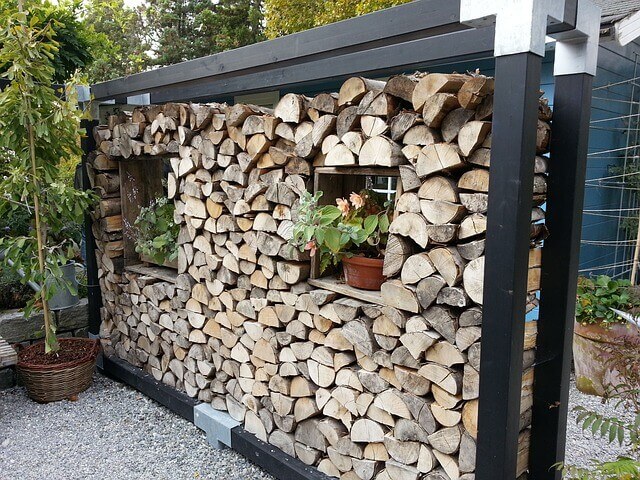
Generally, the partition walls are designed as non-load-bearing walls. But it can be load-bearing walls. The load-bearing partition wall is designed in such a way that it can take the load which acts on it.
The partition wall may be constructed on any floor, it may be the ground floor or upper floor. It rests on a concrete floor or on beams spanning between main walls in the case of the ground floor. In the case of the upper floor, it rests on beams spanning between two columns.
The most functional use of partition walls is privacy from consideration of sight and sound both. Partitions may be broadly divided into the following two categories:
- (a) Those that are made of blocks, slabs, and laid in suitable mortars.
- (b) Those that are made of boards or of sheet materials.
Partitions made by Burnt clay blocks, cement blocks, lightweight concrete blocks, gypsum blocks, Wood wool slabs, etc. are of the category (a). While partitions made from wooden panels, plywood, gypsum boards, lathe and plaster, hard and soft boards, metal sheets, etc. are of category (b)
Requirements of an ideal partition wall
- It should be as thin as possible.
- It should be soundproof.
- It should be lightproof.
- It should be easy to construct.
- It should be economical.
- It should provide adequate privacy.
11 Different Types of Partition Walls
Following are the 11 types of partition walls that are commonly used in building construction:
(1) Brick partitions.
(2) Hollow clay block partitions.
(3) Cement concrete partitions.
(4) Glass partitions.
(5) Timber partitions.
(6) Metal partitions.
(7) Plasterboard partitions.
(8) Straw-board partitions.
(9) Wood wool slab partitions.
(10) A.C. or G.I. sheet partitions.
(11) Plastic board partitions.
(1) Brick partition
The common brick partition walls are half-brick thick. They may be made of plain brickwork or reinforced brickwork or brick-nogged type.

a. Plain Brick Partition
Plain Brick partition is made by laying plain bricks as stretchers with the help of a cement mortar in a ratio of 1:3 (cement: sand). The thickness of this wall is only 100 mm, and both faces of the wall are plastered.
These types of partition walls are not able to take a heavy load. It is possible to build this partition up to a continuous length of about 6 m. The height or length whichever, is smaller should not exceed 48 times the thickness of the brick. Its height is generally restricted to about 2 m.
b. Reinforced brick partition
This is the same as a half-brick thick plain brick partition wall, but some reinforcements are provided there in the form of a wire mesh or hoop iron, or steel bar.
Generally, 6 mm dia of steel bars are provided at every three or fourth course of the brick. This partition is stronger and more stable and durable than plain brick partition.
c. Brick-nogged partition
This types of partition consist of a wooden framework within which half brick masonry is fitted. The framework consists of head, sill, vertical member, and a horizontal member.
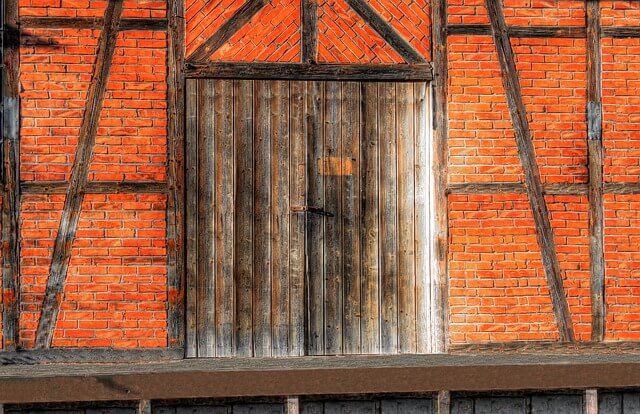
The head and sill are the top and bottom members, respectively, of the framework of the partition. The horizontal member of the wooden framework is known as nogging, and the verticle member of the framework is known as studs.
Generally, the size of the studs and nogging member is 150 x 120 mm and 150 x 50 mm respectively. Studs member are fixed at a horizontal interval of 1.5 to 2 m, and nogging member is fixed at a verticle interval of 1 m. Spaces that are created in between studs and nogging members are filled by half-brick partitions.
Read More: Characteristics of First Class Bricks
(2) Hollow clay block partition
In this type, hollow clay blocks are used to make the partition walls. The hollow clay blocks are made by using clay or terra-cotta.

The blocks can be manufactured in any required shape and size, but their usual size of section is 30 cm × 20 cm and thickness varies from 5 cm to 15 cm. The blocks are provided with grooves which helps to join the different blocks rigidly.
Advantages:
The following are the advantages of Hollow clay block partition walls:
➤ Light in weight
➤ Non-shrinkable
➤ Soundproof
➤ Efficient in preventing fire
(3) Cement concrete partition
When cement concrete is used to make the partition wall is known as cement concrete partition, and it is easy to construct.
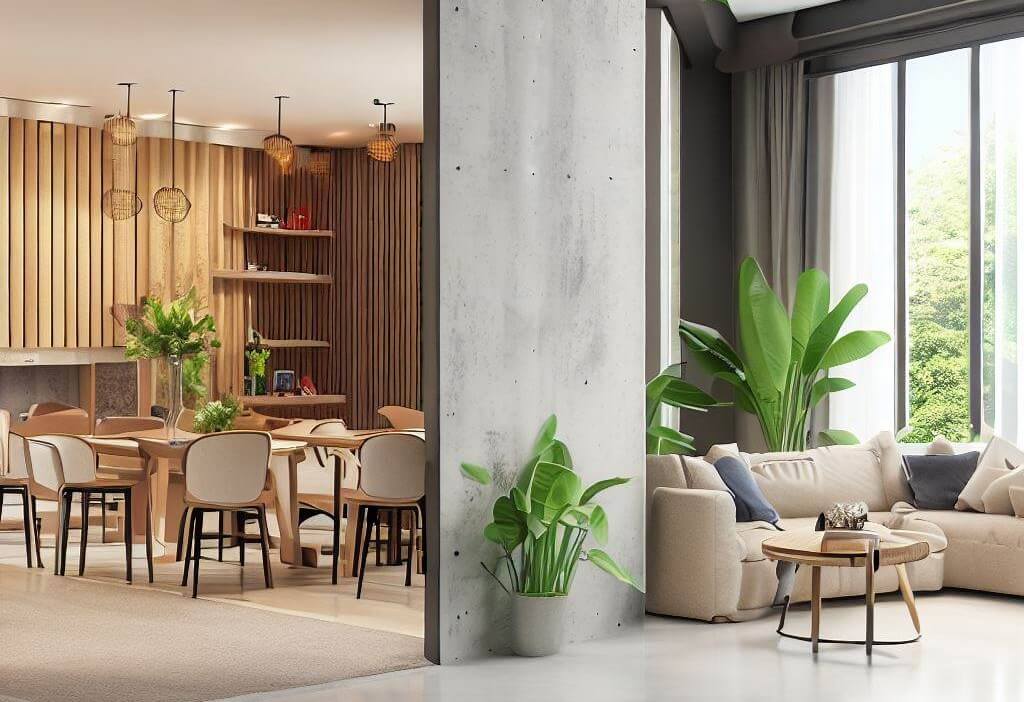
Cement concrete may be used in the form of hollow blocks or in form of a solid thin concrete slab. Hollow blocks are constructed just like a hollow clay block (1: 3 cement mortar is used in block masonry). Partition of cement concrete may be either precast or caste-in-situ.
In the case of precast concrete work, plain cement concrete slabs are prepared in a suitable size and they are secured to the precast poles erected at suitable intervals. Slabs are secured in grooves of the poles. Sometimes, L or T-shaped units may be prepared and used to form a partition wall. The thickness of the solid concrete slab is about 40 mm.
In the case of cast-in-situ work, concrete walls are casted about 75 mm thick. These walls may or may not be provided with any intermediate concrete pole. If additional stability is required, then reinforcement is provided at the center of the thickness. This reinforcement should be provided both in vertical and horizontal directions.
Read More: Advantages and Disadvantages of Cement Concrete Road
(4) Glass partition
When the partition wall is made of glass, it is called a glass partition wall. The glass may be used either in the form of thin sheets or in the form of hollow blocks.
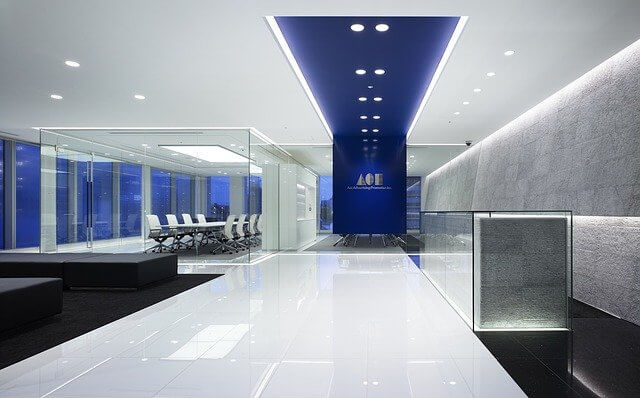
For the sheet glass partition, a wooden frame is prepared, and thin glass sheets are then placed into its panels. The glass sheets are fixed to the panel using putty. Putty is made by mixing linseed oil and white chalk.
In this partition, glass sheets of different styles and colors can be used to get a decorative look.
Advantages
The following are the advantages of glass partitions:
➤ These partitions are soundproof.
➤ Vermin-proof.
➤ Dam-proof.
➤ Light in weight.
Read More: Advantages of Glass Block Masonry
(5) Timber partition
A timber partition wall is a versatile and natural pick for dividing a large space in your home or office. timber is a sustainable and environmentally friendly material, it is renewable, recyclable, and has a lower carbon footprint compared to other building materials.
Timber, with its warm and timeless appeal, can create an inviting and relaxing atmosphere. You can choose from a variety of timber types, finishes, and designs to complement your existing decor or achieve a specific aesthetic.
Timber partitions are light in weight. They are cheap and easy to construct. But they are easily affected in damp conditions and are not good in fire resistance. They are not sound-proof to an appropriate extent.
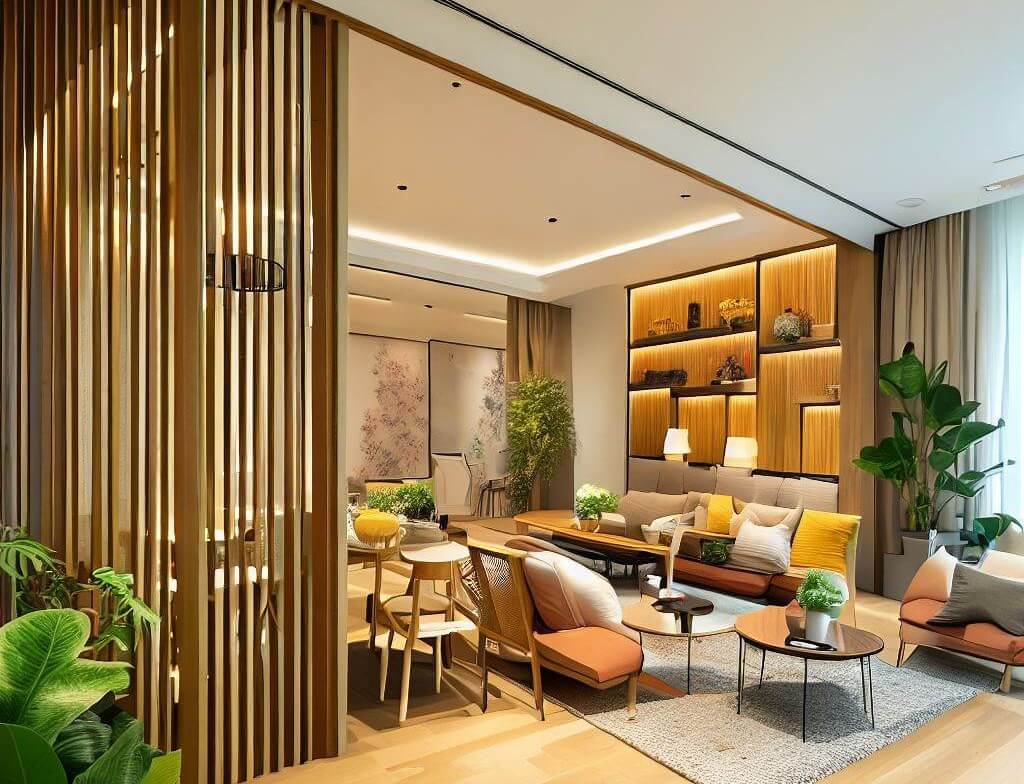
Timber can be easily affected by some insects such as white ants. Due to such problems, sometimes homeowners these days prefer not to use timber partitions. Timber partitions can be divided into the following two categories:
- Common partitions or stud partitions
- Trussed partitions or braced partitions
Advantages:
The following are the advantages of timber partition
➤ The most important advantage of the timber partition wall is that they are light in weight and easy to construct.
➤ They are cheap.
➤ They are easily available.
➤ It can be easily moved elsewhere.
Disadvantages:
The following are the disadvantages of timber partition
➤ They are not soundproof.
➤ They absorb moisture and are eaten away by the white ant.
➤ They do not possess the fire-resisting property
Read More: Characteristics of Good Timber
(6) Metal partition
The metal partition wall is another type of partition wall that is usually made of mild steel. Bronze is also a very popular metal used to make partition walls. Vertical posts are first erected and space between them is covered by fixing sheets of mild steel or bronze.
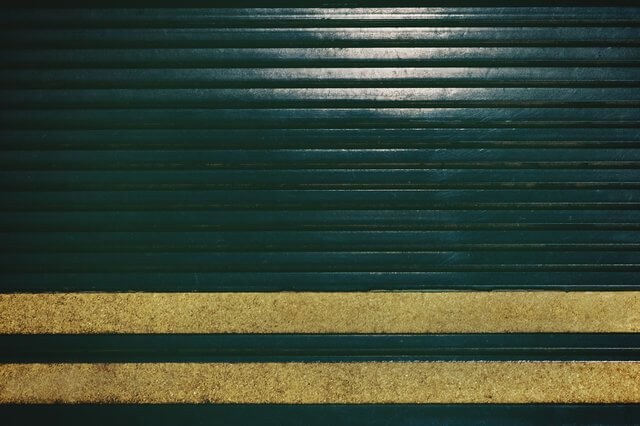
Metal laths can be conveniently used for forming partitions. Metal lath is available in a variety of patterns. In order to fix metal laths in position, they usually require a framework of steel or timber. After fixing, plastering may be carried out on both sides. Such partition maybe 50 mm thick. These partitions are suitable for office and industrial buildings.
Advantage
The following are the advantages of the metal partition
➤ Light in weight
➤ Easy to construct
➤ Soundproof
➤ Fireproof
➤ Strong enough
(7) Plasterboard partition
When the partition wall made by plasterboard is known as a plasterboard partition wall. Generally, the thickness of the plasterboard is around 50 mm to 100 mm. There are different types of plasterboard are available in the market.

Plaster of Paris or gypsum is used for the manufacture of these boards. When gypsum is used for the manufacture of the plasterboard then it is called ‘gypsum plasterboard’. This type of plasterboard is mostly used for partition walls as well as for false ceiling work.
In order to reduce the density, sawdust or some other fibrous material can be added to the gypsum. Plaster slabs are manufactured in moulds of iron or timber.
The surface of the plasterboard may be rough or smooth. If the partition is to be finished with plaster, its face surfaces are manufactured rough. If they are not to be plastered their surface should be finished. Plater boards may be fixed in wooden frames provided with grooves.
Advantages:
The following are the advantages of Plasterboard partition walls:
➤It is light in weight
➤Easy of installation
➤Lightproof
➤Easy to handle
➤ Well fire-resistant properties.
Read More: Necessity of Adding Gypsum in Cement Manufacture
(8) Straw Board Partition
The strawboard partition wall is mostly preferred where frequent removal of partitions is expected. It has good heat-insulation properties.
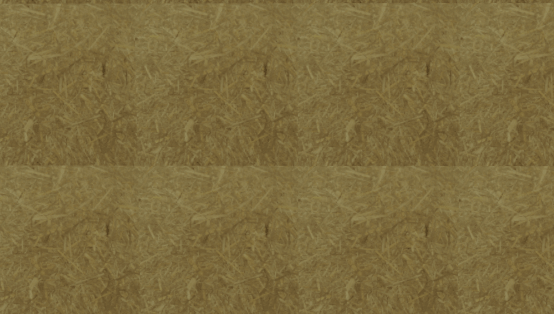
Straw boards or slabs are manufactured by compressing straw, applying proper adhesive and covering the surface with thick paper or hardboard. They can be fixed in a wooden frame or in a steel frame.
(9) Wood Wool Slab Partition
These slabs are produced by mixing Portland cement to wood shavings or wood wool with a limited quantity of gypsum. The weight of this slab is about 4.8 kN/m3. When this type of slab is used to make a partition wall, it is called wood wool slab partition.
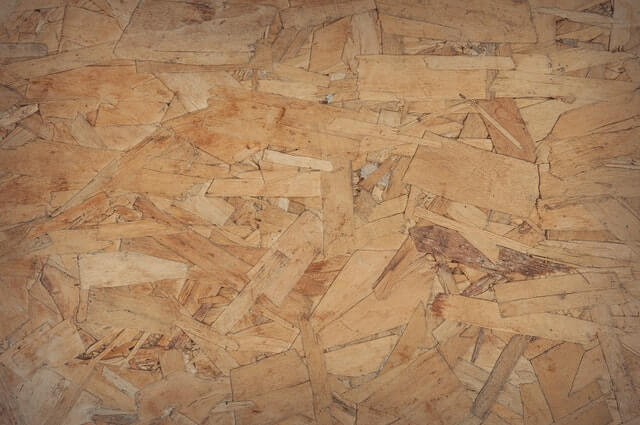
It has good sound insulation as well as fire-resistant properties. Since the weight of the slabs is light, the partition of these slabs is also light in weight. The size of units is of the order of 1.8 m * 0.6 m with thickness varying from 50 mm to 75 mm.
(10) A.C And G.I Sheet Partition
A.C. or G.I. sheet partitions are another type of partition walls that are made by fixing asbestos cement sheets or galvanized sheets on a suitable supporting frame in single or double leaf.
They are durable and have good fire-resisting properties. These partitions can be used in the case of office and public buildings with a suitable decorative look. They may be fixed to permanent verticle posts or maybe clamped and attached to metal runners at the ceiling and floor levels.
Advantages:
➤ Well in fire-resistant even in high temperatures.
➤ Good in light-proof.
➤ It has good heat insulation properties.
➤ It is durable and flexible.
Disadvantages:
➤ Poor soundproof quality.
Read More: Uses of Asbestos
(11) Plastic board partition
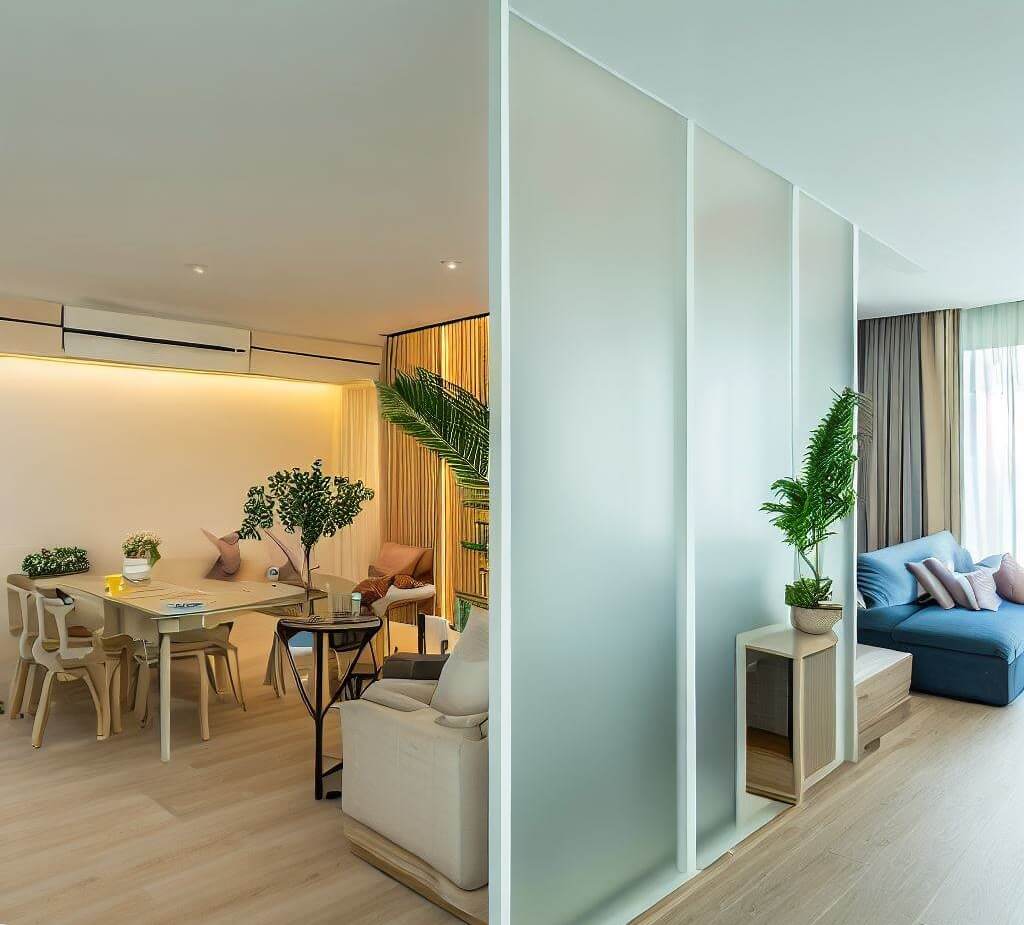
In this partition wall, a plastic board or a section of plastic is used, which is made of PVC and is manufactured in foamed and un-foamed types. In addition to making partition walls, this type of plastic section is also used for many other purposes, such as making a false ceiling, wall paneling, etc.
Read More: